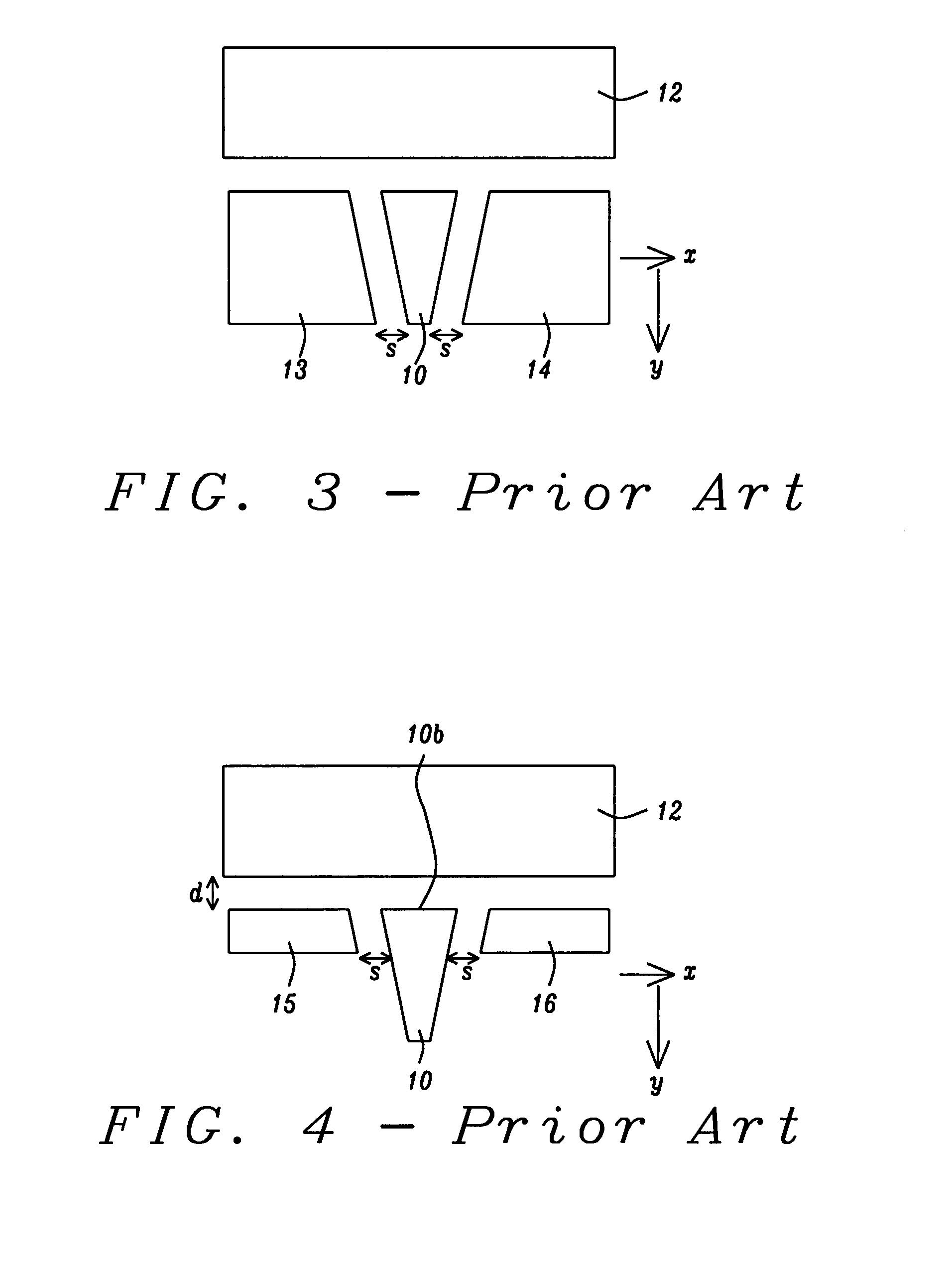Composite shield structure of PMR writer for high track density
a composite shield and writer technology, applied in the field of composite shield structure, can solve the problems of complex structure, great challenge for wafer processing, and no prior art structure provides satisfactory control of field magnitude and field gradient in both directions
- Summary
- Abstract
- Description
- Claims
- Application Information
AI Technical Summary
Benefits of technology
Problems solved by technology
Method used
Image
Examples
first embodiment
[0028]Referring to FIG. 6, a cross-sectional view is shown from an ABS plane that represents the present invention. There is a write pole having a surface (pole tip 20t) at the ABS comprised of a bottom edge 20a, a top edge 20b, and two sides 20c, 20d that is formed on a substrate (not shown) that may be a separation layer made of Al2O3 between a read head and a write head in a separated PMR read-write head, for example. However, the PMR writer is not limited to a separated PMR read-write head and may encompass other PMR writer configurations as appreciated by those skilled in the art. It should be understood that the write pole tip 20t has a bottom surface that terminates in the bottom edge 20a, and a top surface that terminates in the top edge 20b at the ABS. Furthermore, the substrate may be part of a slider (not shown) formed in an array of sliders on a wafer. After the PMR write head is completed, the wafer is sliced to form rows of sliders. Each row is typically lapped to affo...
second embodiment
[0036]Referring to FIG. 7, the composite shield structure according to the present invention is shown. The structure is the same as previously described with respect to FIG. 6 except that the side connections 26, 27 are omitted. In this case, side connections 25, 28 provide control of magnetic potential in partial side shield sections 23, 24 and in leading shield 22.
third embodiment
[0037]Referring to FIG. 8, the composite shield structure according to the present invention is shown. The structure is the same as previously described with respect to FIG. 6 except that the side connections 25, 28 are omitted. In this case, side connections 26, 27 provide magnetic potential control for partial side shields 23, 24 and trailing shield 21.
[0038]Referring to FIG. 9, a top view of the main pole layer 20, narrow section 20n, partial side shield sections 23, 24, and the larger section 20m of the main pole layer is illustrated. The trailing shield 21 above the pole tip 20t has been removed to simplify the drawing. The narrow section 20n extends from the pole tip 20t at the ABS plane to the plane 32-32 where the larger section 20m of the main pole layer flares outward at an angle θ with respect to the dashed lines 33, 34 that are extensions of the pole tip sides 20c, 20d, respectively. The angle θ is preferably between 45 degrees and 75 degrees to help concentrate the magn...
PUM
| Property | Measurement | Unit |
|---|---|---|
| distance | aaaaa | aaaaa |
| distance | aaaaa | aaaaa |
| thickness | aaaaa | aaaaa |
Abstract
Description
Claims
Application Information
 Login to View More
Login to View More - R&D
- Intellectual Property
- Life Sciences
- Materials
- Tech Scout
- Unparalleled Data Quality
- Higher Quality Content
- 60% Fewer Hallucinations
Browse by: Latest US Patents, China's latest patents, Technical Efficacy Thesaurus, Application Domain, Technology Topic, Popular Technical Reports.
© 2025 PatSnap. All rights reserved.Legal|Privacy policy|Modern Slavery Act Transparency Statement|Sitemap|About US| Contact US: help@patsnap.com



